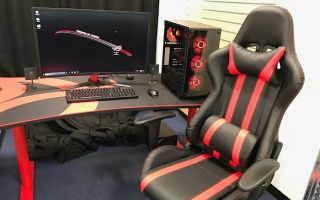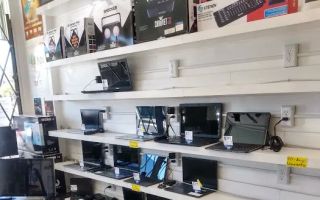In today’s technology-driven world, the ability to boot your PC from a USB drive using UEFI (Unified Extensible Firmware Interface) has become a valuable skill. Whether you are installing a new operating system, running a live version of Linux, or troubleshooting an existing OS, booting from a USB drive allows you to access a range of diagnostic tools and utilities without having to rely on your primary system drive. This guide will walk you through the process of booting your PC from a USB drive using UEFI, step-by-step, to help you get the most out of your computer and perform tasks more efficiently.
UEFI has largely replaced the older BIOS system, offering a more modern and flexible approach to booting and system management. While BIOS uses an outdated method of booting systems, UEFI offers faster boot times, better hardware support, and a more user-friendly interface. Understanding how to access and use UEFI to boot from a USB drive is essential for advanced users and IT professionals alike, as it provides a reliable way to manage and troubleshoot computers.
This article will detail everything you need to know about UEFI and how to boot your PC from a USB drive using this advanced firmware interface. From preparation and formatting the USB drive to navigating your UEFI settings and ensuring a smooth boot process, this guide will provide practical, easy-to-follow instructions to help you get the job done. Whether you're a seasoned tech enthusiast or just beginning to explore UEFI, this guide will assist you in booting from a USB drive with ease.
What is UEFI and Why is It Important?
Before we dive into how to boot from a USB drive using UEFI, it’s important to understand what UEFI is and how it differs from BIOS. UEFI stands for Unified Extensible Firmware Interface, and it serves as the modern replacement for BIOS (Basic Input/Output System). UEFI offers several advantages over BIOS, including support for larger hard drives, faster boot times, and better security features. It is now the standard on most modern PCs, replacing the outdated BIOS system.
UEFI also provides a more sophisticated user interface with graphical elements, making it easier to navigate compared to the traditional text-based BIOS interface. The most important feature for users looking to boot from a USB drive is UEFI's ability to support booting from devices that are not part of the primary hard drive, such as USB drives, external drives, and network locations.
How to Prepare Your USB Drive for Booting
Before you can boot from a USB drive using UEFI, you’ll need to ensure your USB drive is properly prepared. This involves formatting the drive and making it bootable. Follow these steps to get your USB drive ready:

Micro Center
730 Memorial Dr, Cambridge, MA 02139, USA
1. Format the USB Drive
The first step is to format the USB drive. If it’s already formatted, you can skip this step. If not, plug the USB drive into your PC and use the built-in formatting tool on Windows, Mac, or Linux. The recommended file system for bootable drives is FAT32, which is widely supported by UEFI systems.

Best Buy
4210 Centerplace Dr, Greeley, CO 80634, USA
2. Make the USB Drive Bootable
Once the USB drive is formatted, you need to make it bootable. This can be done using tools such as Rufus or UNetbootin. These tools allow you to install an ISO image (such as a Windows or Linux installation file) onto the USB drive and make it bootable. When selecting options in these tools, be sure to choose the UEFI-compatible partition scheme.
3. Copy Boot Files
If you are creating a bootable USB with a specific operating system or utility, you will need to copy the necessary boot files onto the USB drive. For example, if you are installing Windows, you can use the Windows Media Creation Tool to copy the Windows installation files to the USB drive.
Accessing UEFI Settings on Your PC
To boot your PC from a USB drive using UEFI, you will first need to access the UEFI settings. Here’s how to do it:
1. Restart Your Computer
To access UEFI, you need to restart your computer. Make sure your USB drive is plugged into one of the available USB ports before you restart.
2. Enter the UEFI/BIOS Menu
As your computer restarts, you need to press a specific key to access the UEFI or BIOS settings. Common keys include F2, Delete, Esc, or F10. The exact key will vary depending on your motherboard or manufacturer, so refer to your PC’s manual if necessary.
3. Navigate to Boot Options
Once you’re in the UEFI/BIOS menu, use the arrow keys or mouse (if supported) to navigate to the "Boot" section. This is where you can change the boot order to prioritize the USB drive.
Configuring the Boot Order in UEFI
Now that you have accessed the UEFI settings, the next step is to configure the boot order. This ensures your PC boots from the USB drive first. Here’s how to do it:
1. Select Boot Priority
In the UEFI settings menu, find the section that allows you to set the boot priority. This section may be named something like "Boot Order," "Boot Options," or "Boot Sequence."
2. Move the USB Drive to the Top
In the boot priority list, use the arrow keys or mouse to move the USB drive to the top of the list. This ensures that your PC will attempt to boot from the USB drive before any other devices (like the internal hard drive).
3. Save and Exit
Once you’ve adjusted the boot order, save your changes and exit the UEFI settings. The system will now reboot, and it should boot from the USB drive you prepared earlier.
Troubleshooting Boot Issues
If your computer is not booting from the USB drive, don’t panic. Here are some common issues and troubleshooting tips:
1. Check the USB Drive
Ensure that the USB drive is properly formatted and bootable. Double-check the ISO file you used and verify it was copied correctly. If necessary, reformat the drive and recreate the bootable USB.
2. Verify UEFI Compatibility
Some older PCs or certain BIOS settings may not support UEFI booting. If your PC isn’t recognizing the USB drive, check to see if UEFI is enabled. If your computer is still using legacy BIOS mode, you may need to switch to UEFI mode in the UEFI settings.
3. Disable Secure Boot
Secure Boot is a feature that helps prevent malware from loading during the boot process. However, it may block booting from some USB drives. If your USB drive isn’t being recognized, try disabling Secure Boot in the UEFI settings and attempt booting again.
Conclusion
Booting your PC from a USB drive using UEFI can seem complicated, but with the right tools and steps, it’s a relatively simple process. By preparing your USB drive, accessing UEFI settings, and configuring the boot order, you can easily boot from external devices and troubleshoot your system when needed.
For users looking to explore more advanced features or use external drives for operating system installations, understanding how to boot from a USB drive is an essential skill. If you're interested in learning more about PC booting and UEFI, check out our website at Ninja Stik for additional resources and helpful products.




























